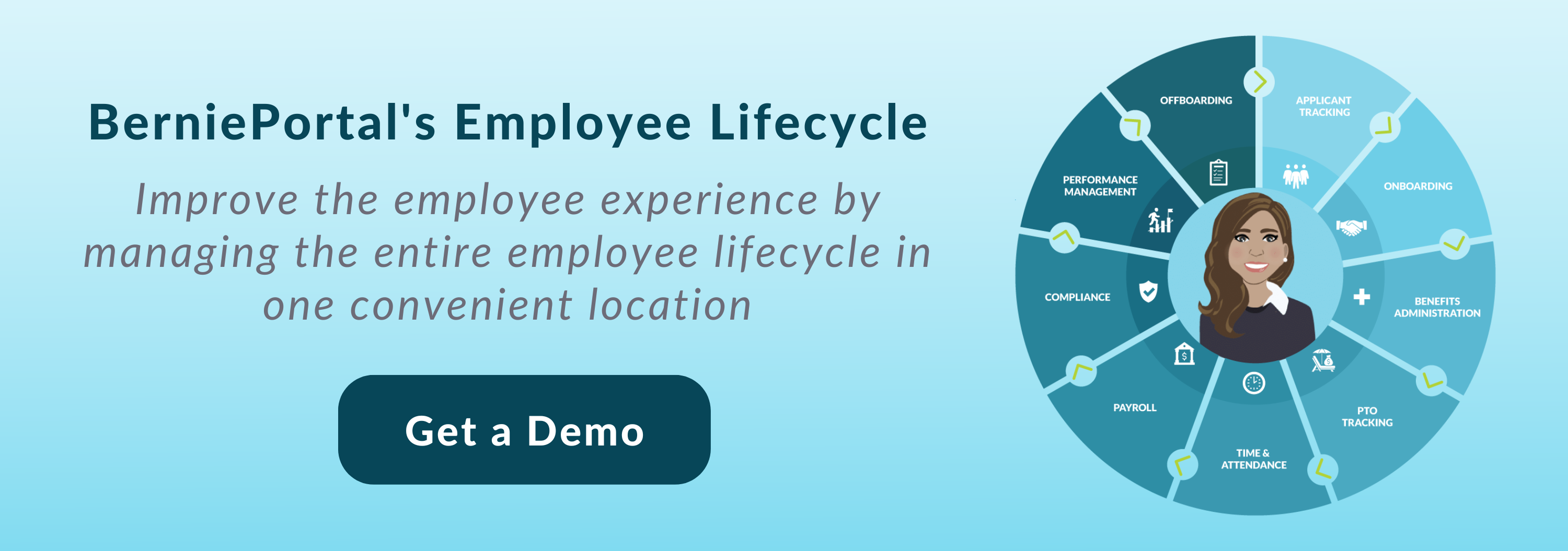
Written by
Aidan Farrish
Aidan is an aPHR-certified writer on the marketing team at BerniePortal. She writes about HR, healthcare, and benefits.
Form I-9 Updates and E-Verify Policy Changes

The new Form I-9 is set to become available on August 1, 2023. Employers may continue to use the previous version until October 31, 2023. Employers are federally required to use this form to identify employees as citizens of the United States. Understanding how the newest updates for this form affect your workplace is critical to continued federal compliance.
Here’s what’s changing for the form’s content and how the government has reevaluated the allowance of electronic verification.
What is Changing for the I-9 Form Itself?
Here’s what’s changing for the I-9 Form itself:
- Simplified Instructions: the form’s instructions have been reduced from 15 pages to 8 pages.
- Shorter Sections: sections 1 and 2 have been reduced by merging fields when possible.
- Preparer and/or Translator Certification: Supplement A, which validates the certification of one who prepares or translates forms for an individual who may be remote, disabled, or non-English speaking, is now a separate document for employees to fill out and return to their employer.
- Reverification and Rehire: Supplement B, used to verify an employee still has valid employment authorization, is also now its own document.
- Terminology Adjustments: there is now a distinction between “noncitizen national” and “noncitizen authorized to work.” Also, “alien authorized to work” in Section 1 has been replaced with “noncitizen authorized to work.”
- Anti-Discrimination Language: guidance heading the I-9 Form has been updated to help employers avoid discrimination while verifying employees.
For more information, see the announcement from the United States Citizenship and Immigration Services.
Electronic Verification of I-9s Are Now Accepted
During the pandemic, employers often could not meet in person with employees in order to verify Form I-9s. In response, the government offered E-Verify, a free service that matches the information provided by employees on their Form I-9 with records available to both the Social Security Administration (SSA) and the Department of Homeland Security (DHS)
However, the plan was to eventually sunset E-Verify. With the grace period fast approaching, the government had to decide whether or not employers could verify I-9 Forms online.
Ultimately, the Department of Homeland Security, in conjunction with the United States Immigrations and Customs Enforcement, has decided to allow the e-verification of I-9 Forms. Here is what they say about this change in policy:
“Authorizing an alternative procedure offers potential benefits to new and rehired employees because they no longer need to travel to a worksite to present documentation for the Form I-9. DHS believes that authorizing an alternative option can be done without compromising the integrity of the employment eligibility verification process. Therefore, this final rule amends 8 CFR 274a.2 to allow the Secretary [Secretary of the Department of Homeland Security] to authorize optional alternatives for examining the documentation presented by individuals seeking to establish identity and employment authorization for the purpose of completing the Form I-9.”
You can read more about this policy change here: Optional Alternatives to the Physical Document Examination Associated with Employment Eligibility Verification (Form I-9).
Employers may now use alternative methods to verify an employee, whether new or rehired, without the hassle of meeting in person.
So, how can you take advantage of this policy change and begin to e-verify I-9 Forms?
Begin by following this graphic provided by the USCIS’s I-9 updates notice.
In consideration of allowing E-Verify in perpetuity, the new Form I-9 now has a checkbox for employers to check off if they have used a DHS-authorized alternative procedure rather than meeting in person. Other changes to the I-9 Form make it substantially easier to use on tablets and mobile devices, which goes hand-in-hand with allowing e-verification.
Also, employers must still maintain copies of documents used for I-9 verification. Remember to have employees send copies of these documents for your records. Record retention guidelines instruct employers to keep these documents for a set amount of time, so be sure to store them safely, like in a cloud-based HR platform. BerniePortal helps HR by storing compliance forms like I-9s in an accessible, safe spot.
This recent policy change is one of several that shows a trend toward the convenience of administrating HR services online. For more information on how HR technology can help you stay compliant, see an expert to ask any questions about the all-in-one HRIS, BerniePortal.
Additional Resources
You can stay informed, educated, and up to date with important HR topics using BerniePortal’s comprehensive resources:
- BernieU—free online HR courses, approved for SHRM and HRCI recertification credit
- BerniePortal Blog—a one-stop shop for HR industry news
- HR Glossary—featuring the most common HR terms, acronyms, and compliance
- Resource Library—essential guides covering a comprehensive list of HR topics
- HR Party of One—our popular YouTube series and podcast, covering emerging HR trends and enduring HR topics

Written by
Aidan Farrish
Aidan is an aPHR-certified writer on the marketing team at BerniePortal. She writes about HR, healthcare, and benefits.
Related Posts
Each year, new state and local regulations take effect, and with a new administration...
As we approach 2025, it's essential for HR professionals to plan for the upcoming year's...
From major holidays to key compliance and ACA deadlines, here’s everything you need to...








Submit a Comment